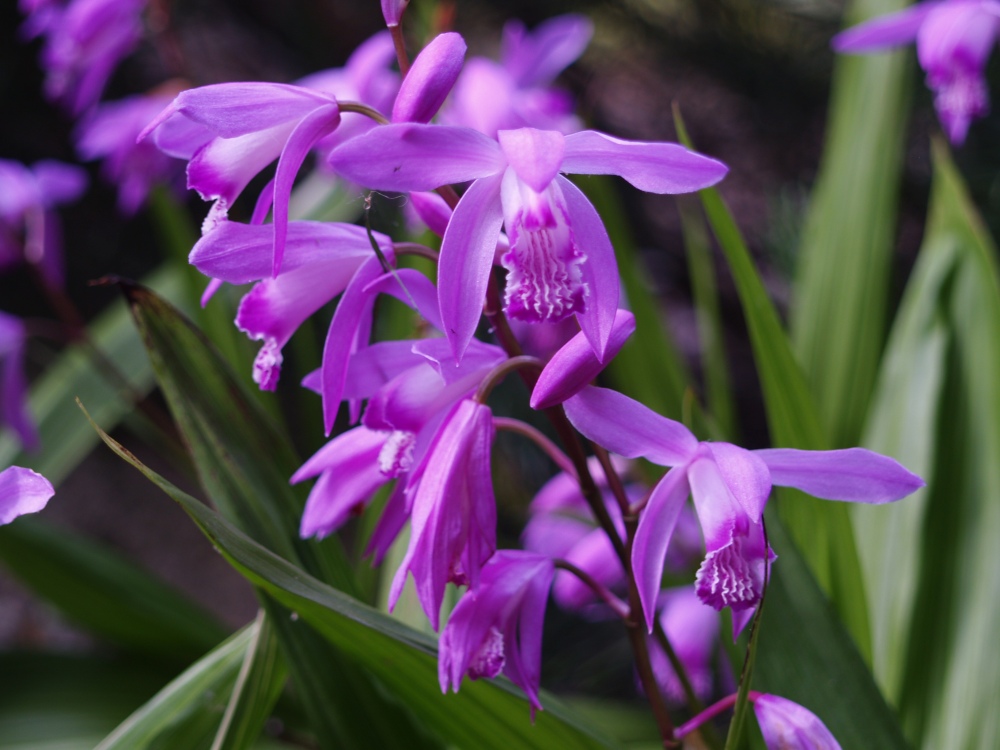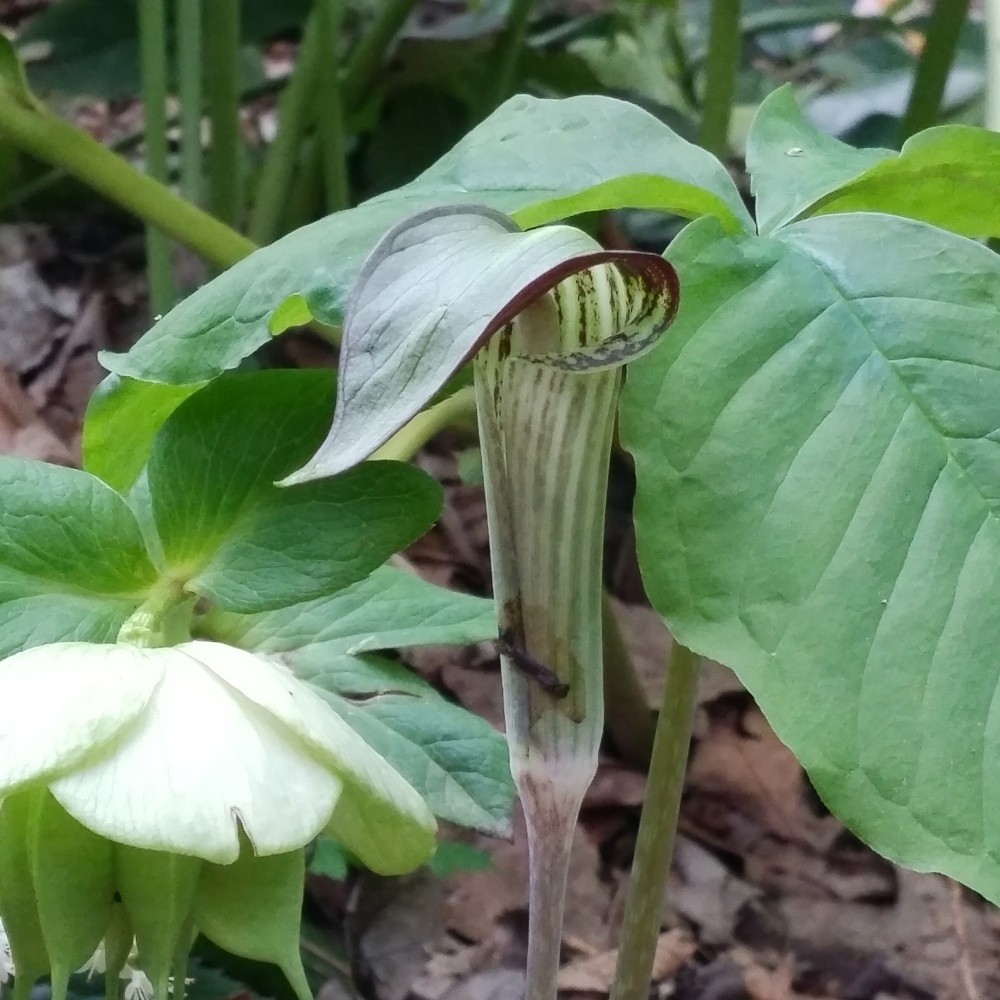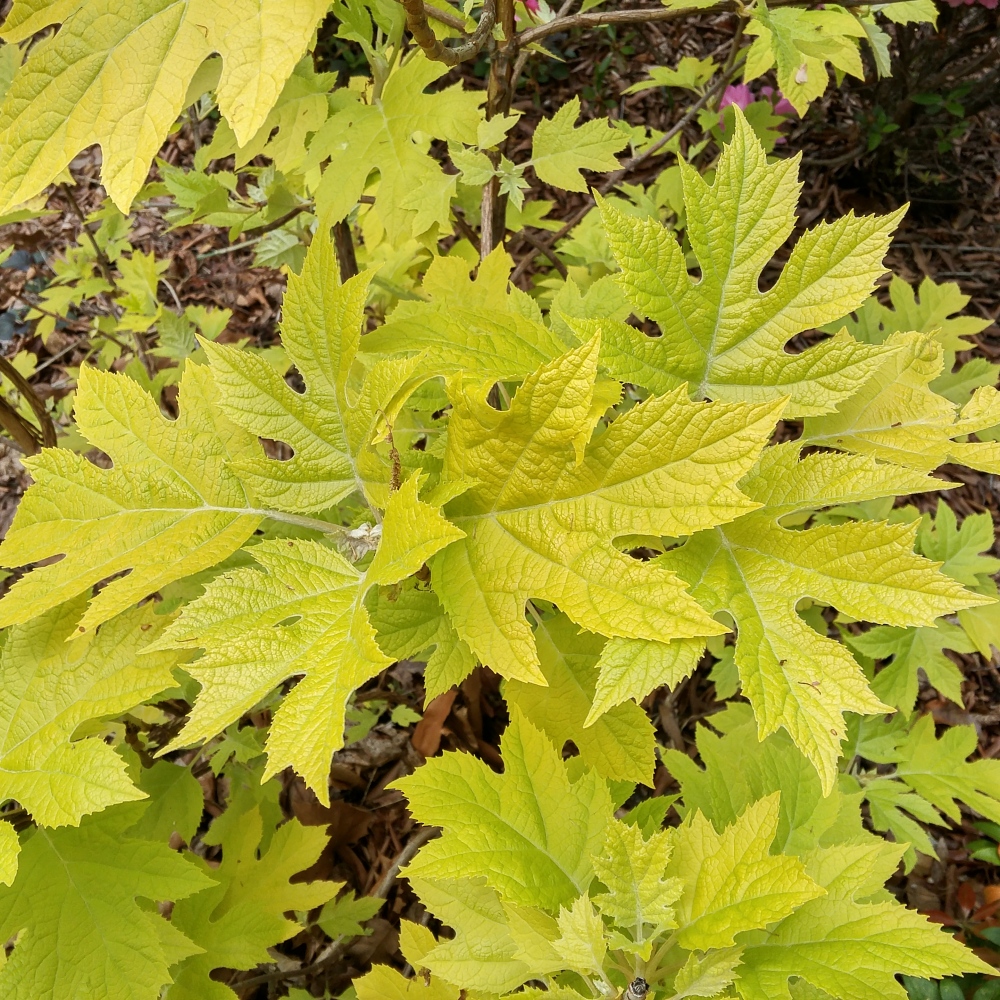This Sunday was perfectly timed, a cool afternoon following a rainy Saturday, with more rain moving in this evening that is expected to linger for a few days. This was a perfect day for planting, cool enough that the afternoon sun barely raised a sweat, and with rain on the way to get new plantings off to a splendid start. I plant whenever the mood strikes, but when I can plant just before a substantial rain it’s likely that I’ll never have to water again.
Open spaces for planting are becoming slimmer each year. Mostly, I’m shoehorning plants that have caught my eye into small spaces, or planting ground orchids (above) and agapanthus (supposedly a cold hardy strain, we’ll see) right through a ground cover. Two clumps of orchids planted several years ago were dug and divided, and one clump was teased down to bare roots to extricate it from a small hosta that it had become tangled with. I suspect that an eye or two of hosta has been missed in the orchid clump, but I’ll figure that out in a few weeks. Too many times, I’ve lost a transplant that’s dried out after moving, but that should not be a problem this time.

Two witch hazels tagged as the native Hamamelis virginiana (but most likely vernalis) were planted just a bit outside the property line in land that I’ve appropriated on my side of the creek. There’s nothing on the other side except open field, but this small area of ground seems that it should be a part of my property, so why not put it to good use? Certainly, I can use the space, and there’s nothing on it except native spicebush (Lindera benzoin) and brambles.





Your hardy orchid is lovely! What type/variety is it?
The flowers of terrestrial orchids Bletilla striata and one with variegated leaves are very similar, so this is one of the two. In part sun, several orchids have spread nicely, and these are easily transplanted. Their hardiness is sometimes listed as zone 7, but these have survived six and seven below with no problem.
Thanks! I have a spot where these might do quite well, especially since they’re supposed to be somewhat “deer-resistant” . I know that designation is always a crap shoot, but it’s worth a try! 🙂
Lovely. Glad your orchids made it. Mine were about 6″ tall when that 18 degree cold snap happened and it seems I might have lost them altogether. We’ll see. Shoehorning is right! I like what Mrs. Whaley replied when asked if everything she planted in her Charleston garden lived: ” If everything I planted lived, a rabbit couldn’t even get through this garden!” If those jack-in-the-pulpit really bother you, I’ll take some off your hands! Thank you for your sublime blog. Mike
Happily, damage from the March freeze was minimal. It seems that mophead hydrangeas have suffered the worst of it, with some barely leafing at the base. Others have leafed to the tips. Otherwise, freeze damaged flowers have dropped and leaves have emerged, and lilacs with new leaves that were damaged have mostly recovered and blooms were not effected.
Unplanned for late freezes for the past two years have gotten to my mopheads also. Lace cap hydrangeas are really my favorite however, but I’m having difficulty finding them except online. I think they’re so under utilized. That Shasta viburnum of yours reminds me of the lace caps. Have you seen any lace caps for sale when you’re out and about?
Thanks for the beautiful photography as always, it brightens up this Irish weather that I’m experiencing here in central Virginia.
The smaller blooms of lacecaps have proven not to entice the general public as much as mopheads. Recent lacecap introductions of Lady in Red and Twist n’Shout have not been successful. When I see cart loads of mopheads going out of the garden centers, but few others, it justifies why hydrangea growers devote so little production to lacecaps and other fine hydrangeas. In the end, garden centers and growers must stock what sells, and the big bloom of mophead is what attracts attention.
I find that that stems and flower buds of lacecaps, Oakleafs, and paniculata varieties are much more tolerant of cold than mopheads, so while there is substantial stem damage there is none on any of my lacecaps and I expect they’ll flower on time.